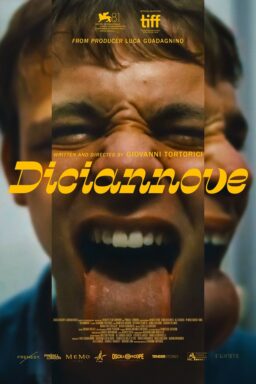Before you spend “An Evening with John Waters” Friday at the Annoyance Theatre, here are 10 things you need to know about the filmmaker once dubbed “The Pope of Trash.”
1. He believes the American cinema may have never had a finer moment than in the mid-1950s, when exploitation films tried everything to lure customers into theaters, including Smell-o-Vision, Ghost-a-Rama and the Tingler (an electrical device that emitted small shocks to selected patrons).
2. One of his heroes is William Castle, the producer who anticipated interactive movies by four decades, by allowing patrons to vote on alternate endings for his horror films. (Waters thinks Castle cheated, since the patrons always voted for the violent ending, leading to speculation that an alternate may not have existed.)
3. The secret Celebrity Room at Frederick’s of Hollywood is secret for a good reason: After Waters had talked his way past store employees and finally saw inside, he found it nondescript, and without celebrities.
4. That and many other facts are contained in Crackpot: The Obsessions of John Waters, his 1986 autobiography, where he poses on the back cover with his trademark pencil mustache (which makes him look like Johnny Depp in “Ed Wood“).
5. He began in his hometown of Baltimore by making lowbudget underground films. Their titles are like a litany of promo-sleaze: “Eat Your Makeup” (1967), “Mondo Trasho” (1968), “Multiple Maniacs” (1969), “Pink Flamingos” (1972), “Female Trouble” (1974), “Desperate Living” (1977) and “Polyester” (1981). Then came his move to Hollywood financing and movies with bigger budgets and more respectability, but no less cheerful sleaze: “Hairspray” (1988), “Cry-Baby” (1990) and “Serial Mom” (1994).
6. The cast for “CryBaby” is arguably the most intriguing roll-call in the history of the movies: Depp, Patricia Hearst, Polly Bergen, Iggy Pop, Joe Dallesandro, Joey Heatherton, Willem Dafoe, Ricki Lake, Traci Lords, Troy Donahue. Susan Tyrrell, Mink Stole and David Nelson. (“This isn’t a cast,” I wrote at the time, “it’s a pileup at the wax museum.”) Waters called it his “dream cast,” and after making the film said there were only two people he wanted to work with but never had: Pat Nixon and Elizabeth Taylor.
7. Waters shot “Polyester” with Smell-o-Rama cues flashing at the bottom of the screen, and issued Scratch-n-Sniff cards to ticket buyers. When the movie was pressed for laserdisc by the Criterion Collection, the release was held up while the company searched for a manufacturer of Scratch-n-Sniff cards, since the technology had fallen out of favor.
8. His first film, made in 1964, was an 8-mm. home movie named “Hag in a Black Leather Jacket.”
9. The artistic inspirations for his career, he says, were the movies “High School Hellcats,” “Untamed Youth” and “High School Confidential.” “Blackboard Jungle” was too classy.
10. Divine, the female impersonator who starred in so many of Waters’ films, was a neighbor of Waters as he was growing up. Waters made Divine famous for his outrageous eyebrows, skin-tight gowns and over-the-top camp behavior. Divine was just beginning to develop a reputation outside the midnight movie ghetto – as a long-suffering mother of a teenage girl in “Hairspray” and as a sinister criminal art collector in “Eight Million Ways to Die” – when he died unexpectedly just as his rave reviews were rolling in for “Hairspray.” Waters said as “Cry-Baby” was released: “I would never be so sacrilegious as to try to replace Divine. This movie stars Johnny Depp, who many people would think is the opposite, but in a way, Depp and Divine are the same to me. They are good actors, and they are movie stars. That’s all that counts. I think they would have been good friends.”











